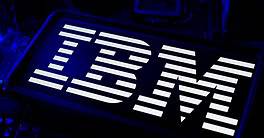In 2021, the world’s companies will back off bond buying in favor of paying down debt and making strategic acquisitions.

As 2020 segues into 2021, corporate finance still shows characteristics of its recent past—most notably, a robust market for cheap corporate debt. According to Refinitiv, 2020 saw corporate debt issuance for investment-grade firms (rated BBB or higher) soar 22% to $4.8 trillion—the largest amount since records started in 1980.
Swedish-Swiss industrial group ABB, for example, on Jan. 19 issued €800 million ($970million) worth of nine-year bonds with a 0% coupon. Analysts say a number of other deals actually involved negative interest rates, meaning the investors paid the issuers to use their money.
“I don’t want to use the phrase ‘free money’ too lightly,” says Mark Lynagh, head of European debt issuance at BNP Paribas, “but officials at large corporates are locking in 0% funding for up to nine years.” Despite such terms, investors remain eager.
Yet, corporate bond issues are expected to plummet in 2021. Hans Mikkelsen, head of high-grade credit strategy at Bank of America Securities, for example, expects new bonds from investment-grade firms in the US will fall 76% from 2020—the lowest level since the bank began tracking in 2002. In some cases, companies just don’t need any more money. He reckons that, thanks to earlier bond sales, US firms have amassed $500 billion. The picture is much the same in Europe, says Lynagh: Despite a “New Year’s holiday” on interest in January, there is an overall expectation of lower issuance in 2021; and many corporate entities are already rich in borrowed cash.
By the same token, they are also deeply indebted. And with banks tightening lending standards, there are rising expectations of a global shakeout. Instead of borrowing more money, CFOs will be focused on firming up their balance sheets and reducing outstanding debt—or on strategic acquisitions. Much of last year’s corporate bond sale proceeds are expected to fuel another, even stronger wave of worldwide mergers and acquisitions this year.
The wild card remains the behavior of the novel coronavirus and related issues—new strains, the speed and efficacy of vaccination programs—and how they impact economic recovery, country by country, continent by continent. A resurgence of the virus that began gathering force at the end of 2020 in the US and EU now seems likely to dampen the recovery in those regions until the second half of this year, and emerging markets are expected to struggle. Asia, on the other hand, has been a standout in both containing the virus and mitigating its economic impacts.
Easy Money
After a very tough start to 2020, many of the world’s central banks, including the US Federal Reserve and the European Central Bank (ECB), opened the monetary spigots to avoid a financial meltdown on the scale of 2008. Interest rates reached historic lows—actually turning negative in Europe—which sent investors scrambling for higher yields. The result was a huge demand for corporate bonds, and many companies leapt at the opportunity.
“There would have been a lot less new issuance without the Fed and ECB intervention,” says Michel Löwy, CEO of international banking and finance group SC Lowy, based in Hong Kong.
The liquidity ultimately led to a worldwide corporate buying spree. After a pandemic-driven economic contraction in March 2020, the market for mergers and acquisitions largely dried up as companies scrambled to bolster their balance sheets. Then, starting in the third quarter, M&A activity came roaring back in the US, Europe and even Asia, reaching a new peak of $2.3 trillion in the second half, according to Refinitiv.
Dirk Albersmeier, the London-based global co-head of M&A at JP Morgan, points to S&P Global’s $44 billion purchase of data firm IHS Markit and Italy’s Banca Intesa Sanpaolo’s €4.9 billion purchase of crosstown rival UBI as examples of domestic growth strategy by acquisition. France’s LVMH snapped up iconic jeweler Tiffany for $15.8 billion; and Healthineers, a platform started by Siemens that grew to be more valuable than the parent company, picked up US firm Varian Medical for $16.4 billion, showing how major multinationals are using cross-border deals to reach into new markets and shore up their positions.
“Good quality companies that are not very affected by the crisis are really doing M&A in order to strengthen their market position, increase profitability and drive their bottom line,” Albersmeier says.
Cross-border transactions reached $1.3 trillion in 2020. Italian online payment firm Nexi snapped up Nordic rival Nets for €7.8 billion and domestic rival SIA for €4.6 billion. These deals created a European champion in digital payments—part of a trend, Albersmeier notes, of companies seeking to dominate an entire continent. In Asia, ride-hailing firm Gojek was reported to be in merger talks with payments company Tokopedia to create a conglomerate valued at $18 billion, as Southeast Asian companies feel the need to add heft to compete in the region.
“There’s never been more premium paid for companies that deliver growth than today,” Albersmeier says.
Too Rich Too Fast
The liquidity boom was such that even lower-rated companies reaped the benefits: Companies with risky profiles issued $545 billion worth of high-yield (“junk”) bonds in 2020, 34% more than in 2019. Even healthy companies may have been tempted to take on more debt than was prudent. Now, the pandemic’s ongoing economic damage is putting them in an uncomfortable position.
Concerns are growing that weaker firms won’t be able to service their bonds, the so-called zombie companies. The default rate for junk-rated US firms could rise to 9% by next September, from 6.3% in September 2020, said Nick Kraemer, an analyst at ratings agency S&P Global, in a note to clients. European speculative-grade firms could reach an 8% default rate from a 4.3% rate in 2020, he believes.
Some responsibility lies with central bankers. “[The Fed and ECB] solved a short-term problem,” Löwy notes, “but ultimately, if your debt is 10 times your cash flow, you have a problem and will need to be restructured.”
Another big concern is for emerging markets. “Capital inflows to many [emerging markets] remain soft, with significant weakness in both [FDI] and portfolio flows,” the World Bank said in a January 2021 forecast. “This, alongside a collapse of export revenues, has led to substantial currency depreciations and rising borrowing costs in some countries, particularly commodity exporters.”
Many emerging-market companies are finding Covid-driven woes piling atop earlier debt hangovers from 2008. In India, for example, many private companies are deeply in debt from the pandemic. “Indian companies are suffering badly,” says Löwy. Although the economy is expected to rebound to 5.4% growth this year, according to the World Bank, the government can’t afford bailouts.
Some emerging markets are doing better than others, with the Middle East and North Africa (MENA) expected to achieve modest 2.1% growth in 2021 thanks in large measure to a rebound in energy prices. Saudi banks, for example, are expected to increase business loans by 9%, according to research from Bank of America.
Another bright spot is the availability of venture capital in the region. According to Dubai-based data firm Magnitt, more than $1 billion in startup capital poured into the MENA region in 2020 despite the global slowdown. Magnitt predicts the market will grow even stronger in the second half of 2021 for startups in financial services and transport, with Saudi Arabia overtaking Egypt in VC funding.
Lenders Lighten Up
Bonds aren’t the only sources of corporate liquidity. Traditionally, about one-third of European corporate debt has been raised through fixed-income markets, and the remaining two-thirds has been financed by banks—directly opposite the situation in the US, where bonds make up about two-thirds of corporate finance. But the weakened economy has led banks to sharply curtail lending, and bonds are not for everyone. “While large firms can access the international bond market, thousands of mid-cap enterprises have no access to it,” Löwy nores.
The Federal Reserve Bank of St. Louis, for example, said that in the third quarter of 2020, banks reported having tightened standards and terms for commercial and industrial loans for firms of all sizes. It said that “significant net shares of banks increased collateralization requirements, loan covenants, premiums charged on riskier loans, and the use of interest rate floors.” CFOs looking toward 2021 are facing an uphill battle getting a bank loan.
As in the US, European banks cite deterioration of economic conditions for tightening lending standards, according to the ECB. After surveying 143 banks in late September and early October, the ECB said that credit standards had “tightened significantly in the third quarter” and were expected to tighten even more going into the fourth quarter.
The weakened state of sectors of the economy, such as hospitality and restaurants, is likely to convince the Fed to keep interest rates at near zero at least until 2023, says Kathy Bostjancic, the chief US financial economist for Oxford Economics.
But she, like others elsewhere, sees a bifurcated recovery for the US. “Obviously medium-sized firms are doing much better than small caps, which are going to have trouble getting financing,” Bostjancic says, despite the funds available in the $900 billion stimulus bill passed in December.
The world’s economic future will be shaped by the trajectory of Covid-19, with economic recovery inextricably tied to the ability to get the virus and all its variants under control. So far, it seems, Asia is leading the world in that regard.
The World Bank forecasts the Chinese economy will expand by 7.9% this year, following 2% growth last year. From tech to retail, Chinese companies are seeing healthy sales while most of the rest of world treads water at best. Car sales, for example, are up 4% in a year when the pandemic drove worldwide sales down 16%, according to Moody’s estimates.
One sign of China’s financial muscle is the stream of companies launching IPOs, both in the onshore Chinese market and in Hong Kong, which has become the second largest market for IPOs after the US. Ride-hailing firm Didi Chuxing is preparing an IPO estimated at $60 billion in Hong Kong in the first half of the year. This follows rival Dida Chuxing, which filed for a $300 million IPO in October.
Elsewhere in Asia, major economies such as Japan, Taiwan and Korea suffered less than Western countries from the economic effects of the pandemic. Japanese bank Nomura says it expects a multispeed recovery in the rest of Asia, with Singapore and South Korea “outperforming” but growth disappointing in the Philippines and Thailand.
Fitch Ratings says its outlook for 299 publicly rated corporates it follows in the Asia Pacific region is now for revenues to be 7% lower in 2021 compared with pre-pandemic forecasts; and earnings before interest, taxes, depreciation and amortization to be 15%. As one result, it is forecasting company leverage to increase this year over its pre-pandemic forecasts.
“If you look at the crisis from an economic point of view, Asia came out of it the best,” says JP Morgan’s Albersmeier. “It’s a combination of policy response, underlying issues, demographics and technology.” He adds that the “market perception” is that the US will recover better than Europe.
Bonds are still cheap and buyers still eager, and “few other assets offer comparable yield globally,” comments Bank of America’s Mikkelsen. And with economic recovery still uncertain, demand hasn’t dried up entirely yet. “With a difficult future possible,” comments BNP Paribas’ Lynagh, “with a new strain of coronavirus, or the vaccine not working, a lot of people are deciding to lock in some additional funding.”



